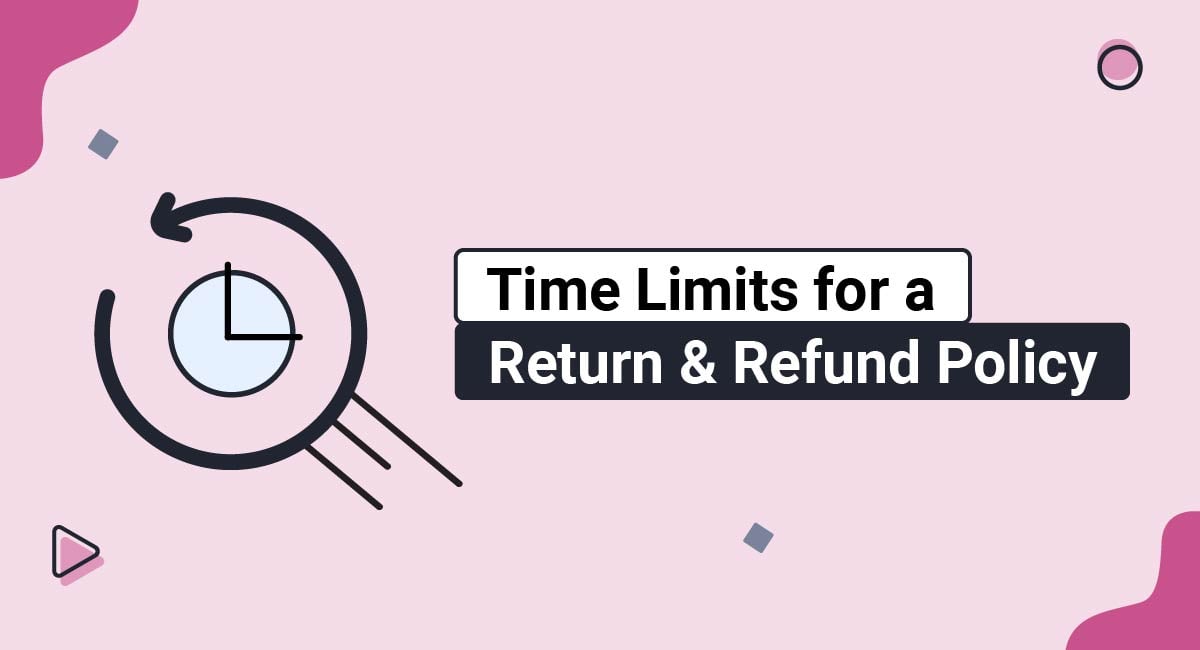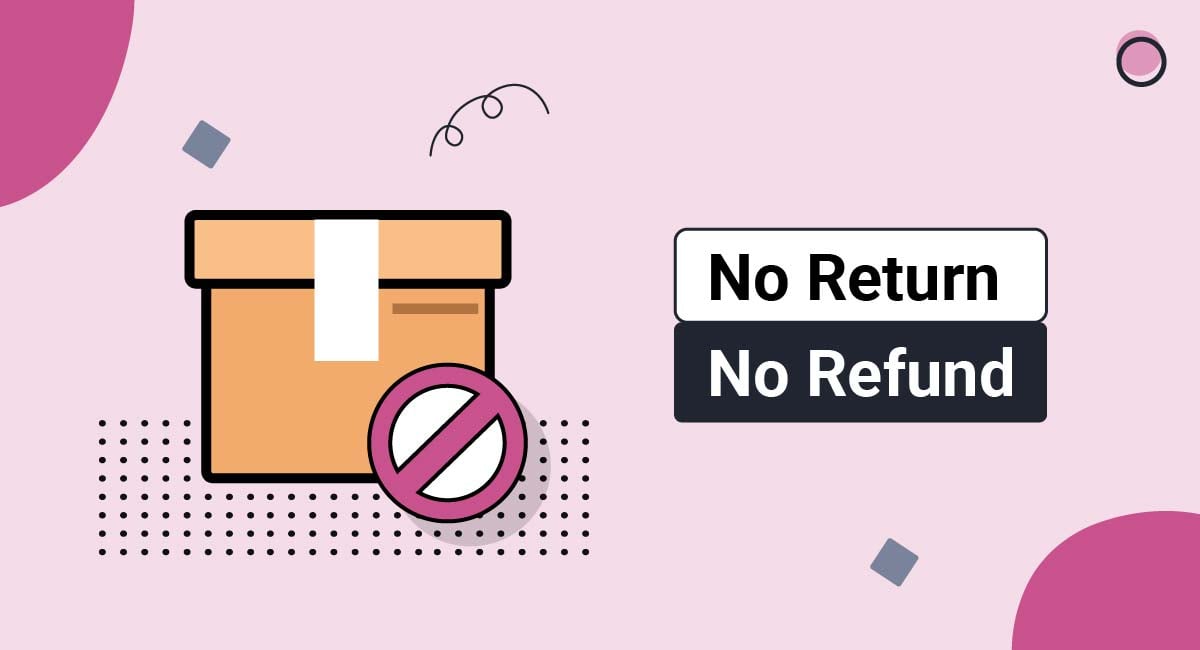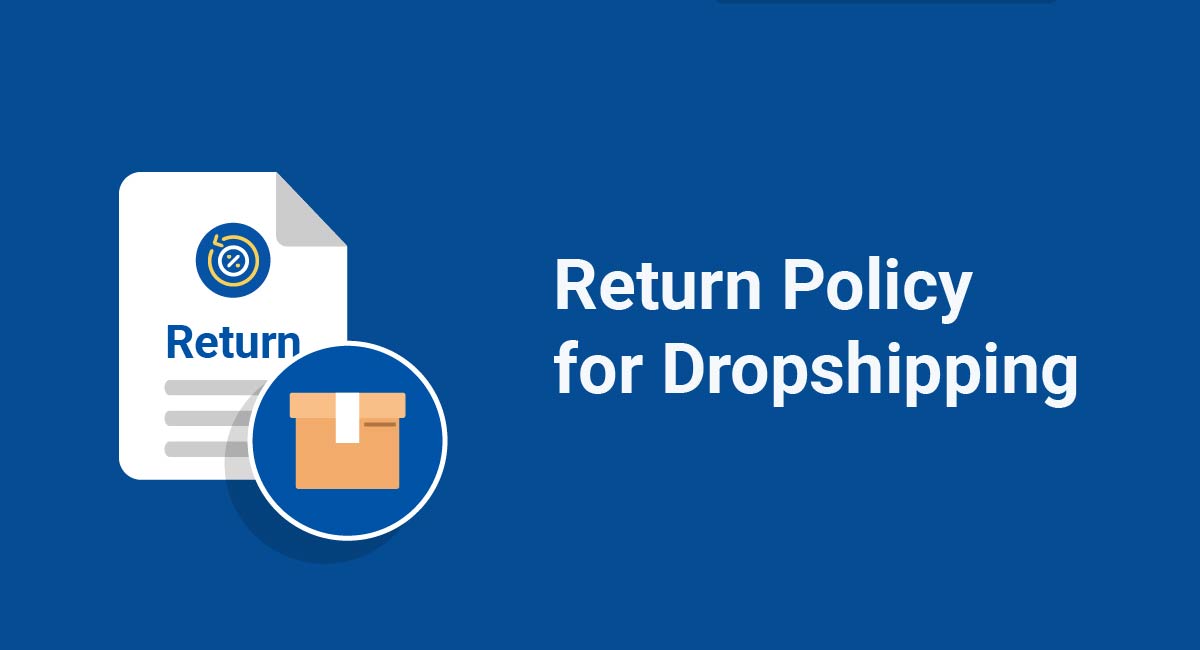Even if you run a successful ecommerce or retail business, there will be customers who are dissatisfied with their purchase. A Return and Refund Policy offers them a remedy when they face these situations.
It helps your business bottom line too by showing that you care. Your policy also affects your customer retention.
This article will explain the importance of time limit information in a Return and Refund Policy, laws surrounding them, and provide helpful examples of how others disclose this important information.
Use our Return & Refund Policy Generator to generate a Return and Refund Policy for your store. Just follow these steps:
-
At Step 1, select where your Return & Refund Policy will be used.
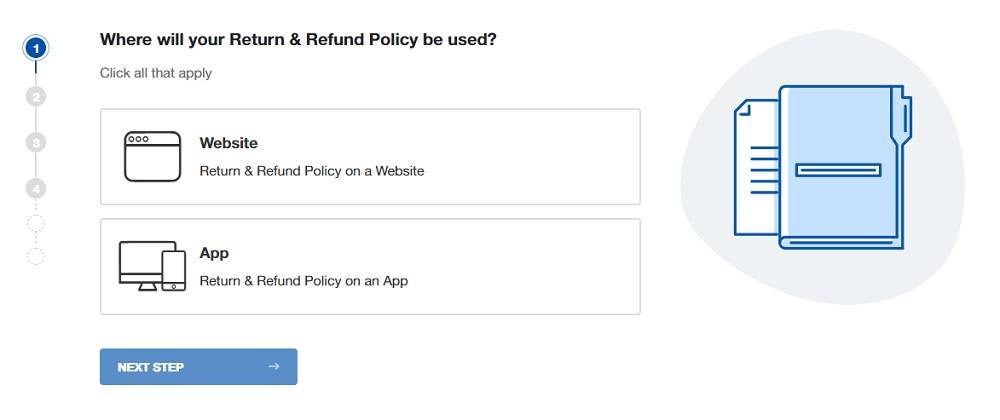
-
At Step 2, add information about your website/app and business.
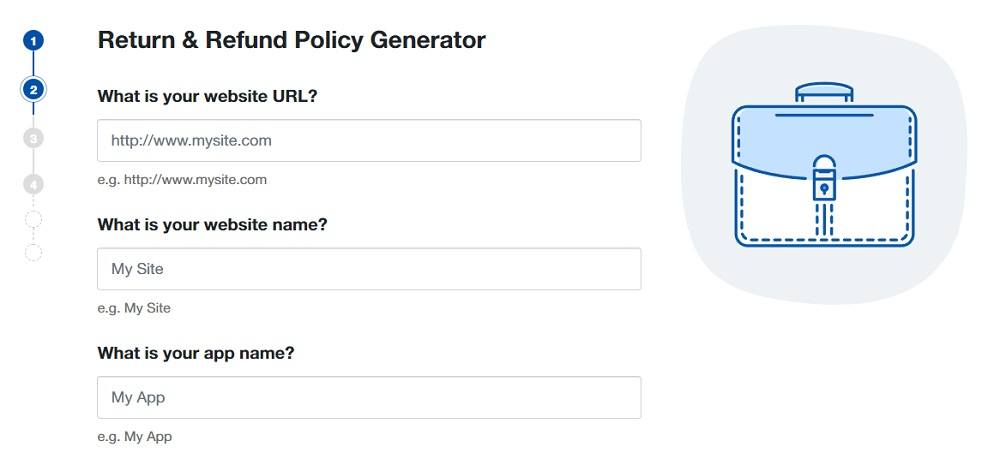
-
Answer some questions about your business practices.
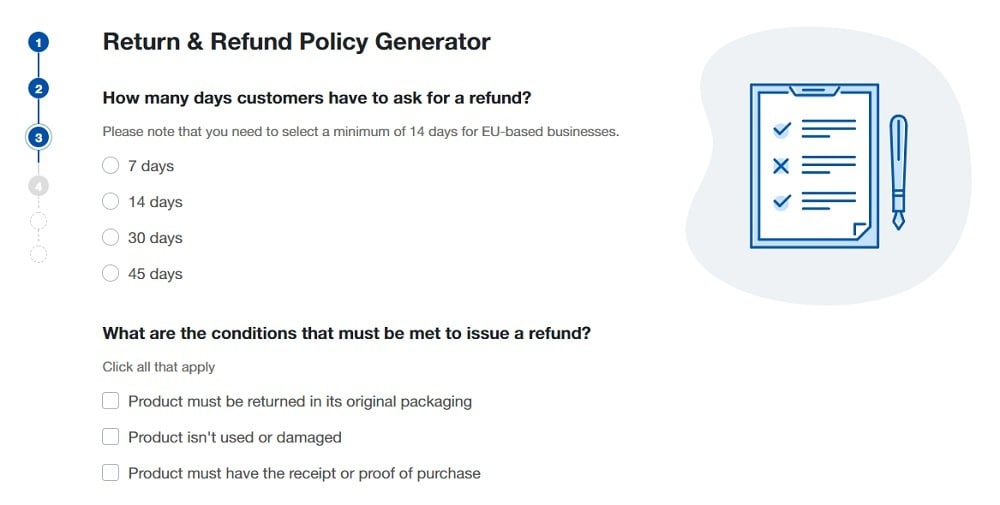
-
Enter an email address where you'd like to receive your Return and Refund Policy and click "Generate."
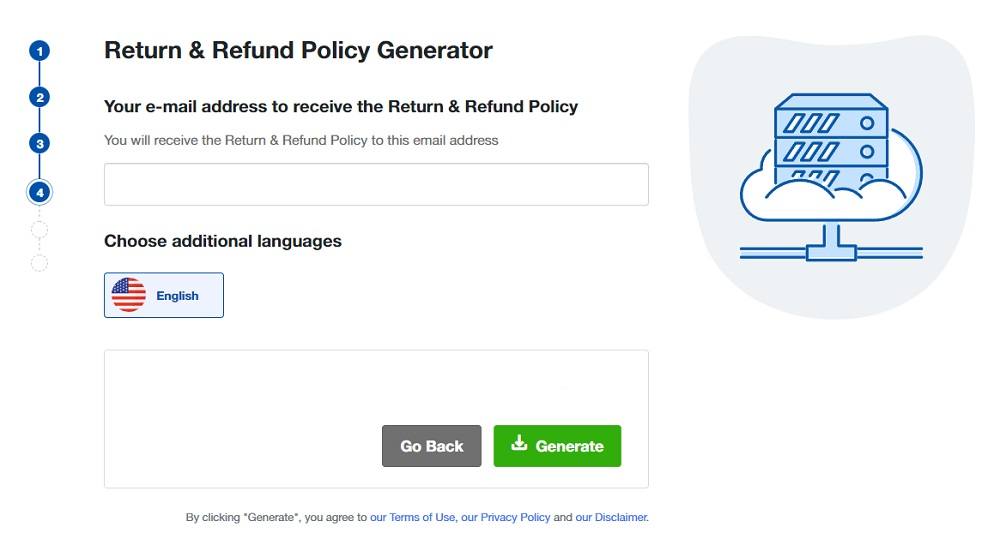
Done! You'll be able to instantly access and download your new Return and Refund Policy.
- 1. What is the Purpose of Return and Refund Policies?
- 2. Why Have Time Limit Information in a Return and Refund Policy?
- 3. Are There Laws on Returns and Refunds?
- 3.1. U.S.
- 3.2. UK
- 3.3. Australia
- 4. Examples of Time Timits in Return and Refund Policies
- 4.1. Examples of Time Limits from U.S. Stores
- 4.2. Examples of Time Limits from UK Stores
- 4.3. Examples of Time Limits from Australian Stores
- 5. Where to Display a Return and Refund Policy
- 6. Summary
What is the Purpose of Return and Refund Policies?
The primary purpose for Return and Refund Policies is the preservation of customer relationships - customer retention.
Even with all precautions taken, there's a likelihood that one of your products may not work as expected. It's also possible the item will not appear the same way it does online.
Both of these options can prevent a customer from being happy with their purchase from your store.
When customers experience shortcomings, they want solutions. One solution includes the right to return an item for a refund.
Return and Refund Policies also make purchases more likely. If a customer considers a new item, they want to purchase it risk-free in case it does not work out for them.
This kind of policy from your store offers that reassurance.
Finally, in some countries, Return and Refund Policies are required by law.
That includes set time periods for allowing a return and refund.
It's important to know these laws so you do not risk penalties.
Why Have Time Limit Information in a Return and Refund Policy?
There's a risk of fraud in returns and refunds. Customers may buy an item with only short-term use in mind or attempt to hold you responsible for the damage they caused.
Time limit information helps with this by enforcing decision-making but also reducing the chance of returns after items are well-used. Return windows of 14, 30, and even 90 days after purchase reduce the possibility of these bad faith returns.
Additionally, you will save your business team time by not having customers inquire about your return time limit all the time, but by having this in one easy to find place.
It also helps you comply with any legal requirements that dictate that you offer at least a minimum time limit window for returns. Not disclosing this may make it seem like you are not obeying the law.
Are There Laws on Returns and Refunds?
Most countries leave Return and Refund Policies to the discretion of the store.
However, there are jurisdictions where you need to draft a clear policy and offer minimum time limits for allowing returns and refunds.
U.S.

There are no federal laws requiring retailers to allow returns and refunds in the US.
As such, there are no minimum return windows specified by federal statutes either.
States may have different requirements.

California, for example, requires stores to post their Refund Policy in a conspicuous place unless they offer full cash refunds or store credit within 7 days of purchase.
If a store does follow this requirement, customers may return items for a full refund within 30 days of a purchase.
Notices are not required for perishable food items or sale products marked "All sales final."

Florida enforces similar requirements.
If a store does not post a conspicuous notice indicating that returns and refunds are not allowed, then the customer may return goods for a full refund within 7 days of a purchase.
U.S. state laws are mainly concerned with notice requirements.
Return windows for customers to receive refunds vary by store and state. These policies and any time limits on them exist mainly for goodwill rather than legal reasons.
Stores often provide return and refund policies are that consistent with their values and appropriate for their products.
UK

The UK is unique in that it has a specific law regarding returns and refunds, the Consumer Rights Act 2015.
It entitles customers to a refund, replacement or repair when the item they purchased is faulty or does not resemble its online or catalog description.
If the store has no right to sell the item, due to no licensing or expertise, customers may receive additional funds beyond the purchase price if they suffer a defective product.
The time limit for making a return and requesting a refund is 30 days. For digital content, the time limit is 14 days.
The UK law doesn't require a return or refund if the items are not faulty.
Examples include clothing that fails to fit, unwanted gifts or mere mind changes.
There are exceptions on Internet or mail order items since it's often impossible to determine quality by photos alone.
That's why Return Policies for online stores are often more generous than those posted in a retail store.
Another law, the Consumer Protection from Unfair Trading Regulations 2008, makes it a criminal offense to mislead customers on their legal rights.
Under that law, you cannot make any of the following statements in your Return and Refund Policy:
- That you do not issue refunds
- That you only authorize returns with an exchange for another item
- That customers can only receive store credit rather than a refund for a faulty good, and
- That all items are sold as seen
Even stating "No refunds unless goods are faulty" is illegal even though that's true under the law.
Avoid statements that are too limiting as well as those that are untrue.
Australia

Like the U.S., Australian law allows retailers discretion when determining Return and Refund Policies - including time windows.
Australian consumer law offers many rights to your customers but the guarantee for a refund is not one of them.
If you sell products in Australia, you have the option to repair an item if it has a minor problem.
You can also offer a replacement instead of a refund if the item sold is seriously flawed.
As in the U.S., if you wish to offer a Return and Refund Policy, that is within your discretion.
However, stores cannot state that they do not give refunds under any circumstances.
You also cannot refuse to help a customer who has a defective product unless they knew it was faulty at the time of purchase.
Therefore, it's safe to assume that you cannot rule out refunds entirely and you need to develop a way to help customers who come across defective products.
Examples of Time Timits in Return and Refund Policies
Except where indicated, time limits on returns and refunds are stated within a Return and Refund Policy.
When you are on the website of an ecommerce store, you can find the policy in a footer link or within a FAQ.
Examples of Time Limits from U.S. Stores
Since there are no minimum time limits for returns in the U.S., either on federal or state levels, you find diversity in Return Policies from U.S. stores.
Amazon offers a 30-day window for purchases minus some exceptions, but also offers a longer holiday return deadline.
This shows flexibility to address specific circumstances, like the holiday return rush:
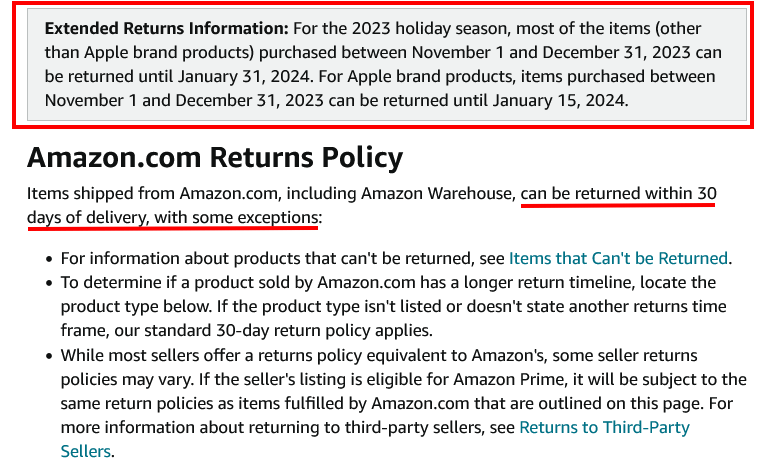
There's also flexibility in determining the validity of a return.
Target offers a general return deadline of 90 days:
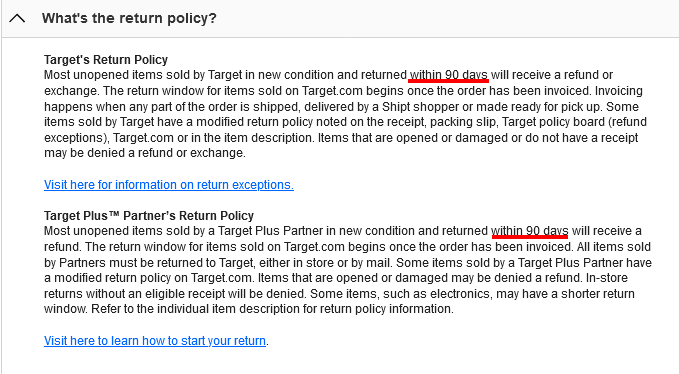
This example has a shorter window:

Don't forget to disclose time limits for non-tangible goods as well, like digital downloads. Here's an example:
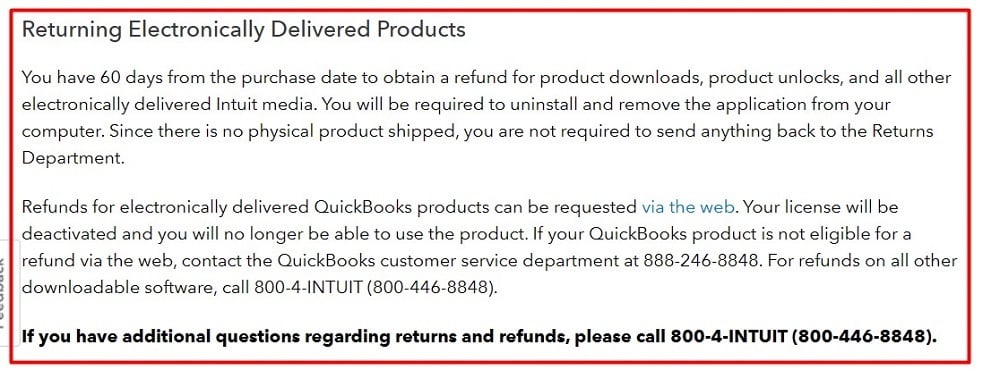
Here's how accidental downloads are handled:
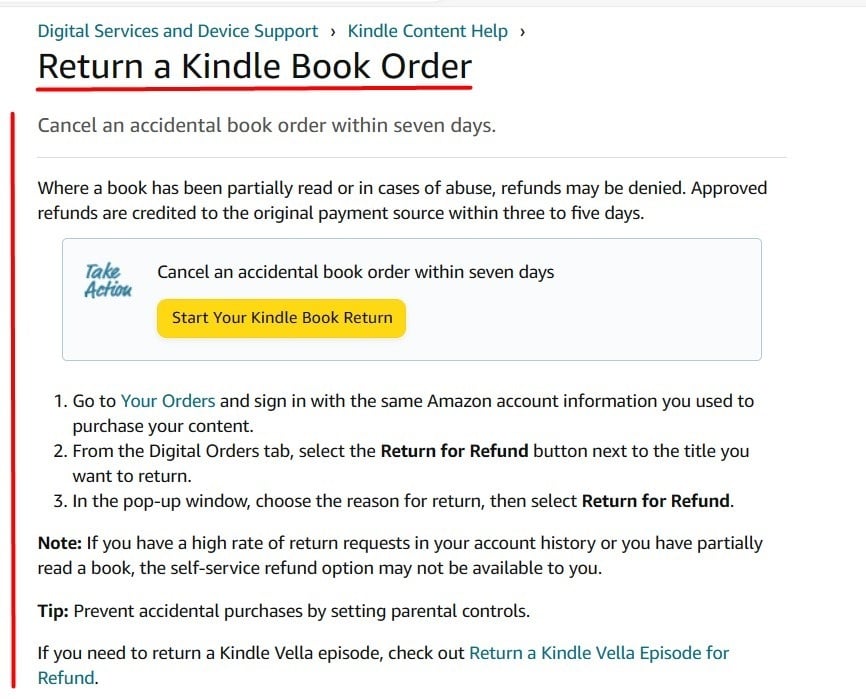
As you can see, time limits vary widely, from just a few days, to many months.
As long as you are conspicuous with your policy and comply with applicable state laws, you can create a Return and Refund Policy that works well for your store and industry.
Examples of Time Limits from UK Stores
Since the UK law provides concise time limits, you find the least variety from UK retailer websites.
When you find something different, it's because the retailer offers more time than the law requires.
Amazon UK states its 30-day return deadline window at the top of its return policy. This keeps it in compliance with the Consumer Rights Act 2015:

Here's an example that indicates a 30-day return window for items and applies the 14 days to digital purchases (in this case, mobile phone contracts):

The UK law makes it clear that stores can offer more rights to consumers than required.
Here's an example where a 35-day return and refund window is offered. This applies to both UK and U.S. markets:

If you sell products in the UK, indicate a minimum return time window of 30 days.
Even if you don't require purchases to be returned in a set amount of time, offer an inflated deadline or make it clear there's no time limit.
Unlike other countries, the UK makes this a requirement for Return and Refund Policies and you do not want to risk penalties.
Examples of Time Limits from Australian Stores
Since the law does not impose standards for time limits on returns and refunds, the policies are different between retailers.
This can include no time limits stated in the policy, while others may be more strict.
Here's a simple, one-sentence description of a 14-day return window granted to customers to receive a refund:

Here's how a retailer notes right away that its policy does not limit any time frames granted under the laws of the country:
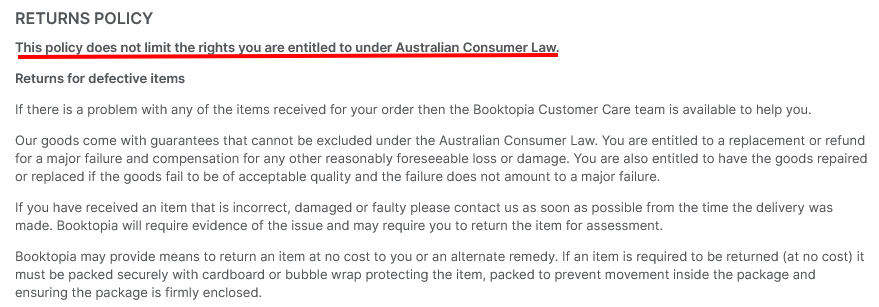
Much as in the U.S., Australian retailers use the lack of regulation to promote flexibility in their return and refund policies.
This applies to time limits as much as actual terms. This is why you see return windows that vary from unlimited to just a few days.
Where to Display a Return and Refund Policy
No matter where you or your customers are located, your Return and Refund Policy should always be displayed in a way that's easy to find, such as by linking it to your website's footer.
Here's an example of linking to returns information in a site footer:
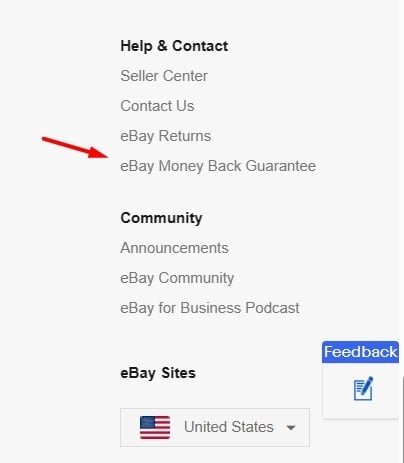
And one more example:
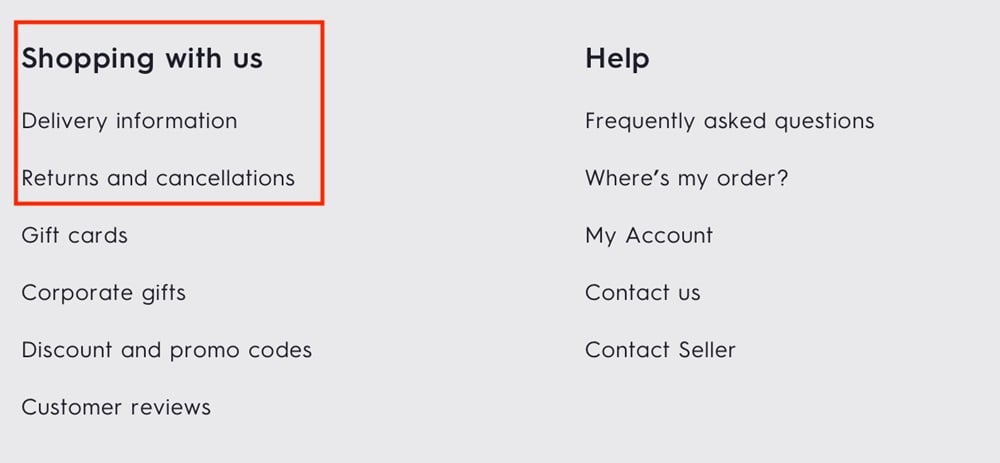
You can briefly summarize key elements from your policy elsewhere on your site, such as on your checkout or shopping pages, while linking to your full policy, as seen here:
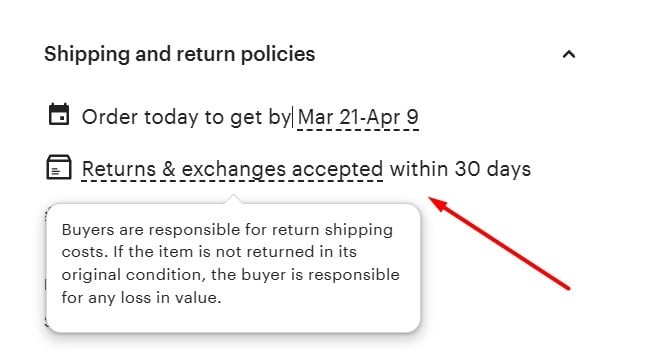
Summary
If you sell any type of goods, from digital to tangible, your Return and Refund Policy can benefit from disclosing the time limits customers have to complete a return.
Having this information will help customers know what to expect, while saving you time by not having to answer this question individually to customers or potential customers.
Make sure to follow relevant laws of where your customers are when setting the time limit, if there are any. You may have to set a minimum time limit for customers, and anything shorter will be in violation of the law.

Comprehensive compliance starts with a Privacy Policy.
Comply with the law with our agreements, policies, and consent banners. Everything is included.
